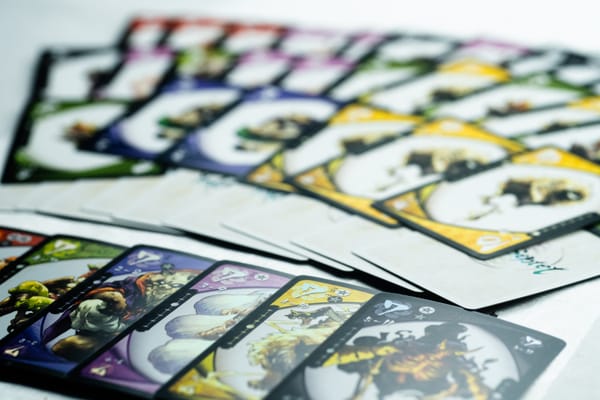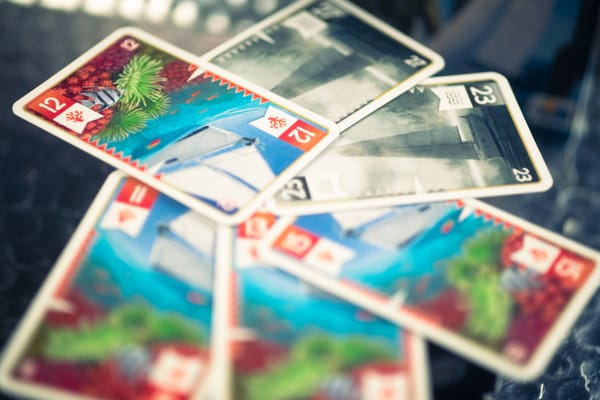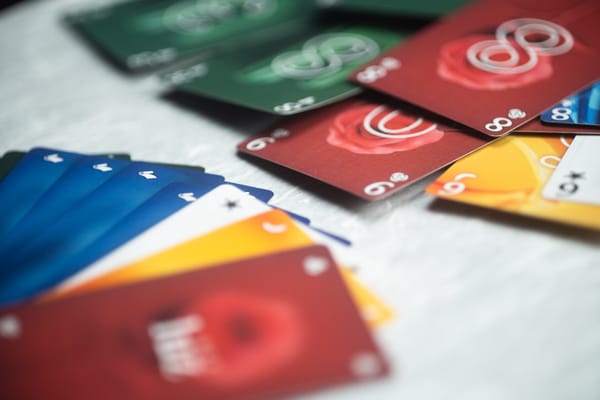Escape Rooms and Exit Games
Cooperative puzzle-solving, at home or trapped in a room, elevates gaming.

I don’t remember when I first went through an escape room. 2014, maybe? I’d read a lot about them, and I was really getting into modern board games around the time, and it proved to be everything I hoped it could be. We were close to escaping, but we didn’t. That didn’t dim my enthusiasm for the experience.
Escape rooms never became a regular fixture of weekends or anything for me; I never sought out rooms to solve on my own, and I didn’t form a league of escape-room-solving sleuths. Instead, they were an activity we did two or three times a year, with the last two or so years being a real dry spell for the usual reasons.
When I get a chance, I’m there. Escape rooms scratched an itch: They’re time-limited, stressful problem solving exercises you do with a group of friends or family. The feeling of accomplishment when we solved a particularly difficult puzzle, or when eventually I escaped my first room (it was perhaps too easy, but who’s counting?) — it was a rush.
As I think about what makes escape rooms conceptually great, a few ideas come to mind. First, they’re thematic, cooperative experiences in physical spaces. You’re trapped in a room, and you have two distinct choices (among other, smaller choices between the gaps): You can either engage and try to have a good time, or you can be miserable. If you’ve paid good money to be in an escape room, the chances are good that you’ve bought in on the concept. The magic circle becomes easy to slide into because of those constraints, and when everybody’s in that frame of mind, something, well, magical happens. Fun becomes requisite, and it’s put under time constraints for added pressure.
Second, they’re a tactile experience. Whether it’s the usual find-the-combination mechanic or something more physically involved, you’re having to search one or more rooms for clues. Whether those clues are physical objects you fit together, paintings on a wall, or something more intricate, escape rooms provide something unique in games.
Finally, escape rooms fascinate me as vehicles for groups to share their skillsets. By way of example, we played an escape room during a family reunion with several of my wife’s younger cousins, among others, and while there were things they didn’t have great context for — it was, for many of them, their first escape room — they excelled in some areas. One short algebraic puzzle that we were struggling through was solved basically immediately by a young teenage cousin. She took the problem and solved it really quickly. As a cooperative endeavor, escape rooms gave us all a chance to learn something about each other.
A side note here: Do you “play” an escape room? “Attempt” one? I don’t know the best language to use here, but play does feel right.
Thanks for reading! If you’d like to get future installments in your email, subscribe here.

Exit: the Game and other variations on a theme
For much of the last two years, we haven’t really gone to escape rooms, but that hasn’t stopped us from cooperative puzzle-solving with friends and family. We’ve been diving heavily into the Exit series designed by Inka and Markus Brand. It scratches the same itch as escape rooms, and in many cases, the puzzles are more thoughtfully designed.
An important difference from escape rooms: Exit games don’t have a time limit. Sure, you can earn more stars if you complete the game faster, but there’s nobody that’s going to kick you out at the time limit. You can take your time on puzzles, and that can lead to more satisfactory conclusions.
With Exit games, there are even physical puzzles to solve. They’re not as weighty, say, as escape rooms, where you might throw a tennis ball in a sock into a laundry hamper, for example. But the game will surprise you with physical puzzles, and while I’m not about to spoil any of those, you will find they play an important role. You’ll actually physically alter your game, though, so don’t expect to play with it again.
With the cooperative aspect in play, some tactile components, and the encouragement to engage in the magic circle, Exit games are a cost-effective, safe, and easy-to-find alternative to escape rooms. But there’s still something missing that I think is worth talking about: a sense of space.
In an escape room, there’s a real sense of space because, well, you’re in a confined space. You’re expected to stay in that space. You can’t step away for a snack or a break, because you’re just … there. (Note to self: I’d love an escape room in which snacks played a role.) That’s part of what makes escape rooms so magical.
My top five Exit games
- The House of Riddles — There were some really fun physical parts to this one. I would tell you more, but, well, you know. Spoilers.
- The Abandoned Cabin — This was the first one I played, and I played three more over the following three days. The theme was fun, the puzzles were great. It was everything I wanted.
- Dead Man on the Orient Express — In the words of Michael Scott, there has been a murder. Your job is to solve it.
- The Gate Between Worlds — This one gets a bit meta, and I love the variety of puzzles here.
- The Pharaoh’s Tomb — Such a delightful theme, and there’s one puzzle in particular I thought was a blast.
Some other options
Let’s look quickly at some other options for escape-like games, because the market sort of flooded a while ago. Each of these is non-destructive unless otherwise noted, so you can easily give the game to a friend when you’re done.
- Unlock: This is probably the biggest competitor to the Exit games. The games all need an app, which is fine, really. The games are naturally a bit less physical.
- Deckscape: This is a purely card-based escape room game, no app needed.
- Escape the Room: I haven’t played any of these, but they do include a timed element. Interesting.
There’s also an interesting trend of games that are focused on solving a mystery of some sort, and while they’re similar in some ways, they’re importantly different in that there simply aren’t that many escape-style puzzles.
There are plenty of other options, os if you’ve tried any and want to share your thoughts, I’d love to hear them. Reply to this email or leave a comment, and if there’s enough response, I’ll send out some responses and my thoughts, too — and maybe we’ll give a few more a try.
What we’ve been playing
I thought I’d end with a look at some of the games we’ve played lately, simply because it’s been a while since I sent out a newsletter to you all. I’d love to hear what you’re playing, too. Drop a note!
- echoes: The Dancer is one of those aforementioned murder mystery games. It’s app-based and is completely narrated, as you’re basically trying to piece together audio clues. I thought it was a pretty slick game.
- Paint the Roses is a cooperative logic puzzle that reminded us a bit of Clue. Without revealing information on your card, you’ll try to help others figure out what you’re holding by playing on a tile on a board.
- Three trick-taking games at a family reunion: Texas Showdown, Skull King, and Dog Tag Trick. A great time, really.





